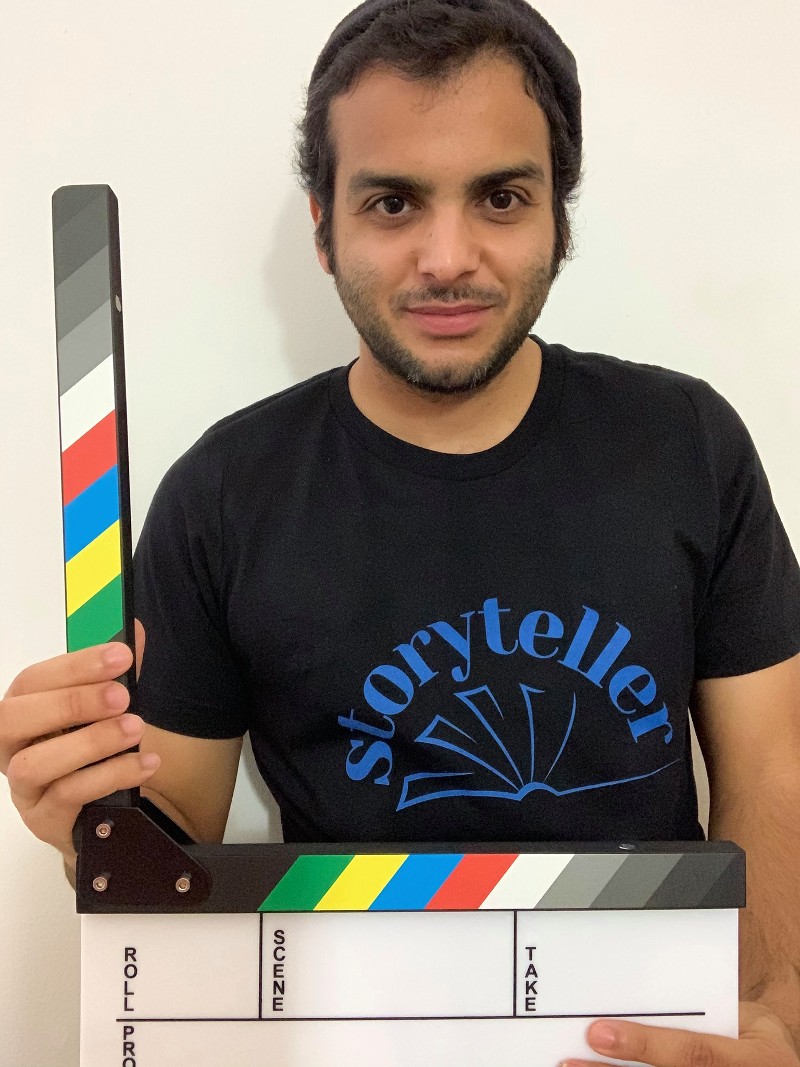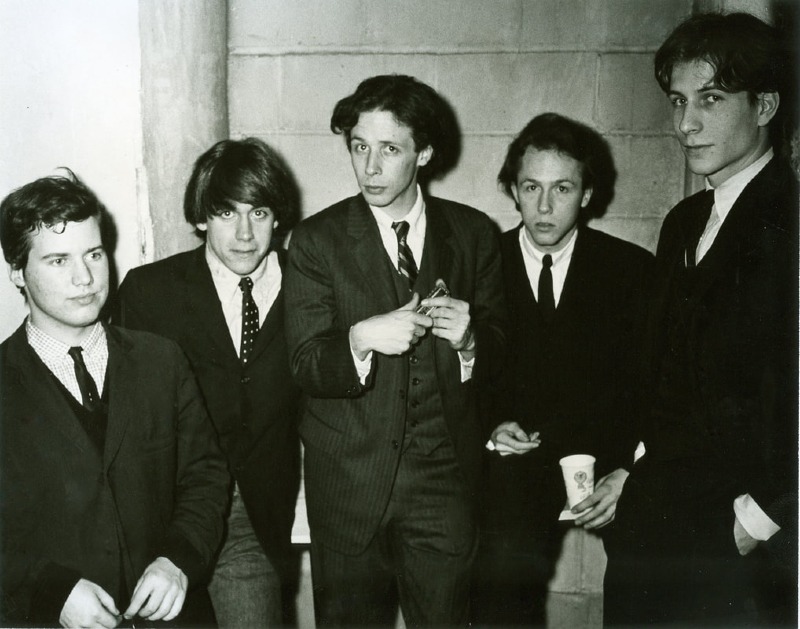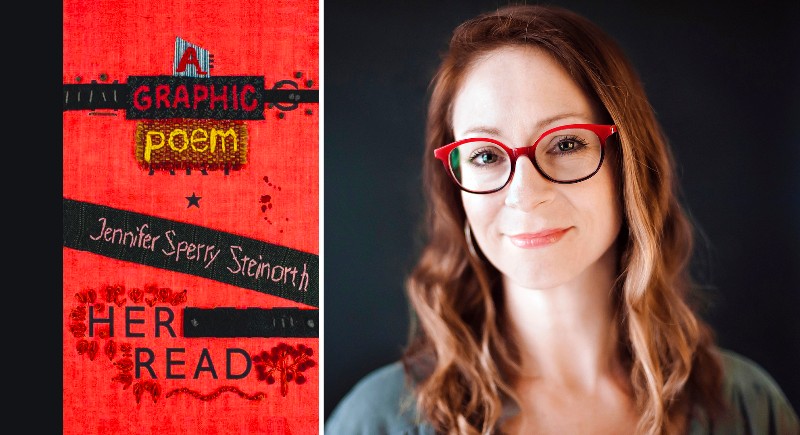For Stevie—with Love and Squalor: Ann Arbor’s Chirp honors late rodent companion on a funky new single

After his pet rat passed away, Jay Frydenlund was at a loss for words.
Instead, the Chirp frontman decided to honor his late rodent companion, Stevie, with a spirited namesake instrumental.
“Stevie the Rat was the most fearless rat that has ever existed, so I wanted to write something about her that represented that,” said Frydenlund, Chirp’s lead vocalist and guitarist. “I started working on it a few days after she died.”
Alongside bandmates Brian Long (bass, vocals), Sam Naples (guitar, vocals), and Patrick Blommel (drums) in the Ann Arbor prog-funk-jazz jam quartet, Frydenlund penned the playful, ardent “Stevie.”
Buoyant electric guitar, soulful bass, and pulsating drums scurry throughout the melodic funk and psych-rock adventures of Stevie’s past.
“I think the energy of the tune represents Stevie’s pretty well,” Frydenlund said. “Brian [Long] lights that song on fire with his bass solo. If Stevie were a bass-playing rat, that’s exactly what she would have done.”
Chirp will share “Stevie” and other fresh, funky tracks during an Aug. 13 show in Ann Arbor’s Liberty Plaza as part of the Concert to Shut Down Line 5. It will be the band's first hometown show since playing Ann Arbor Summer Festival: Top of the Park in June.
Muse Over: Emma McDermott finds inspiration from relationships on “She Likes to Fly” album

For Emma McDermott, people from her past and present provide the ultimate creative inspiration.
The Nashville, Tennessee electro-pop singer-songwriter thoughtfully channels previous relationships and memorable interactions on her reflective debut album, She Likes to Fly.
“I write a lot of my lyrics from my heart … not necessarily as journal entries, but if I’m feeling a certain feeling, and I’m able to put music to it, then it’s almost like being in a musical,” said McDermott, who hails from Ann Arbor and studies commercial voice at Belmont University.
“I do like to write about what I’m feeling, the times that I’ve had, and the people who have come and gone in my life. I write people as muses a little bit, so if I had a relationship in high school, and then I was just reflecting on it during my sophomore year of college, then that’s what fuels the lyrics and fuels the feeling.”
Throughout She Likes to Fly, McDermott chronicles an emotive journey of self-discovery that grooves and glides through life and love. Alongside intimate lyrics, magnetic synth-based instrumentation, and infectious dance-pop hooks, she provides captivating tales that instantly resonate with listeners.
“That’s sort of how it came together, just on its own,” McDermott said. “The songs were written over a span of like two or three years, so it wasn’t like I sat down and said, ‘Oh, I’m gonna write this album about this subject matter.’ It was kind of like a conglomerate sort of entity, and all those songs found their way toward each other to be on the album.”
Out of the "Shadows": Jazz vocalist Olivia Van Goor explores lesser-known songs on her debut EP and returns to Blue LLama

This story originally ran on February 7, 2022. We're featuring it again because Olivia Van Goor will play Blue LLama Jazz Club on July 30.
For her debut EP, When The Shadows Fall, Milford jazz vocalist Olivia Van Goor unearthed and reshaped five hidden gems from the Great American Songbook and beyond.
“None of them are any of the classic standards like ‘Fly Me to the Moon,'" Van Goor said. "I intentionally chose standards that most professional working jazz musicians know, but not all of them. The two that are standards are ‘Willow Weep for Me’ and ‘No Moon at All. ... I did the Detroit Jazz Workshop two years in a row, and the first time I sang ‘Willow Weep for Me,’ and the second time I did ‘No Moon at All.’ I picked my milestone moments with learning the music.”
Those milestone moments also serve as a timeless journey through a spectrum of emotions ranging from hope to heartbreak. Each When The Shadows Fall track waltzes, swings, and bops from one era to the next.
“I was really inspired by Veronica Swift, and she’s one of the best jazz vocalists of the time right now," Van Goor said. "On her last album, she took some musical theater songs that haven’t been taken by any of the legends and turned into standards and did them in that format.
“If you listen to an old recording of ‘Shadow Waltz,’ you’ll notice the style is completely different (from my version). I arranged all of the songs, and that’s my biggest originality to it, except I wrote the lyrics to ‘Hershey Bar.’”
The Olivia Van Goor Quartet will return to Ann Arbor’s Blue LLama Jazz Club on Feb. 18 July 30 and will perform songs from When The Shadows Fall as well as some past and new tunes.
Poet and U-M professor Linda Gregerson’s “Canopy” takes its impetus from gratitude and wonder at the saturating intelligence of the natural world

Linda Gregerson’s new book of poems, Canopy, lifts us to the heights of the treetops and also studies those who toil below where “There’s always a moment before the moment when nothing / is ever the same again.”
The single word “canopy” as the title conjures both a place to aspire to and a boundary delineating human limitations.
Gregerson teaches at the University of Michigan as the Caroline Walker Bynum Distinguished University Professor of English and directs the Helen Zell Writers Program. She is a chancellor emeritus of the Academy of American Poets and a fellow of the American Academy of Arts and Letters. She is the author of seven books of poetry and two books of criticism, and she is the co-editor of one collection of scholarly essays.
Trees, land, and the whole environment figure strongly in these poems in Gregerson’s most recent volume. A painting on a panel of oak allows for the identification of when it was created. When shipping was a dangerous, frequently fatal endeavor on the Great Lakes, a relative several generations back “was among the ones / who did not drown. Who sold his ship / and bought a farm.” The land and the trees bring surety and safety.
The reality on the ground, however, often carries both happiness and disappointment, as a poem asks, “What is it / you love / that has not been ruined because of you.”
Canopy considers not just the ecosystem in which we live but also the current events in it, such as the COVID-19 pandemic threaded through several poems and the murder of George Floyd in “Fragment.” Yet addressing these significant events and issues leave us “bound to act and bound / to be not enough.”
Action is necessary, but the problems are much bigger than any individual.
Emilio Rodriguez asks who gets to decide what’s offensive in his play "God Kinda Looks Like Tupac"

NOTE: "God Kinda Looks Like Tupac" has been pushed back from its original opening date to August 5 due to illness.
Emilio Rodriguez, whose play God Kinda Looks Like Tupac opens at Ann Arbor's Theatre Nova on July 29 August 5, says his theater career started early.
Very early.
Donning his mother’s high heels and appropriating her broom and a funnel, he performed “one-kid adaptations of The Wizard of Oz” in the family’s living room.
Perhaps one reason why a movie with the famous line "There's no place like home" resonated with Rodriguez is that he is a self-described “military brat” who grew up on the move. Rodriguez says he didn’t have a sense of hometown until he moved to Detroit in 2012 to teach high school English and drama for AmeriCorps. One thing that informs all his work, he says, is “a loose sense of the idea of home. The plays are not necessarily set in someone’s home [but ask] … how do people make a sense of home?”
When Rodriguez began teaching, he saw the classroom as “an extension of home. … In the younger grade levels, kids spend more time at school than with their families.” He also found that friendships with colleagues gave him a sense of connection, of a mock family, a home.
Rodriguez set God Kinda Looks Like Tupac in a Detroit high school, where a white art teacher in the mostly Black school has been targeted as insensitive. A Latino teacher offers a suggestion to the art teacher that might help him keep his job: It’s Black History month, she tells him, and there’s a competition; if a student he enters can paint something in celebration of the month and win, chances are good he will be named Teacher of the Year.
And who would fire Teacher of the Year?
Prime Times: Michael Erlewine on The Prime Movers Blues Band, Iggy Pop, and Ann Arbor in the 1960s

Though they never released a record in their heyday or topped a concert bill outside their hometown, The Prime Movers were unquestionably one of Ann Arbor’s most important bands of the 1960s.
While some 38 musicians would eventually rotate through the group, its core lineup came to include drummer James Osterberg, christened “Iggy” by the band; keyboardist Robert Sheff, later famed as the avant-garde composer “Blue” Gene Tyranny; guitarist Daniel Erlewine, known today as one of the world’s top luthiers; and vocalist/harmonica player Michael Erlewine, who would go on to found the All Music Guide, All Movie Guide, and a host of spinoffs.
One of the first white American bands to devote themselves to Chicago-style blues when originators like Muddy Waters and Howlin’ Wolf were still in their prime, the group was regularly on the bill at Ann Arbor’s Canterbury House, Clint’s Club, Mother’s, The Ark, The Schwaben Inn, The Fifth Dimension, and The Depot House. The Prime Movers also appeared at Detroit’s Grande Ballroom and Living End, and even the Fillmore and Matrix in San Francisco. But their devotion to the blues led them to turn down an offer to sign with Motown and split with manager/A-Square Records founder Jeep Holland, who sought to force them into a pop-rock mold. As a result, The Prime Movers’ powerful sound became just a fading memory to those lucky enough to hear them in person.
But stashed away in the basement of Michael and Daniel Erlewine’s brother Stephen were well-recorded tapes of the group in action at Clint’s Club and The Schwaben Inn. In 2008 a track appeared on the Ace/Big Beat compilation A2 (Of Course), then a 45 rpm single was released by Third Man.
Finally, in late 2019, Sundazed Records’ Modern Harmonic imprint issued a full 10-track CD and two-LP set of The Prime Movers' work. Highlighted by the stabbing, string-bending guitar leads of Dan Erlewine and the soulful organ of Robert Sheff, the 1966-7 recordings also feature the future Iggy Pop singing their Yardbirds-style cover of “I’m a Man,” which reveals more than a hint of what was to come two years later in The Stooges.
I spoke with Michael Erlewine about the band’s history and the recent release of their music, more than 50 years after it was recorded.
Late-Night Journals: Former Ann Arbor police officer Peter Stipe recalls 18 years on the force in his memoir "Badge 112"

For almost 20 years, Peter Stipe served as a police officer in Ann Arbor. After getting off work late at night, “I would be amped up, go home, and write it all down,” he says. “I wrote a lot of profiles of people at work and their personality quirks.”
The result of all that late-night journaling is now Stipe's memoir, Badge 112.
The idea for putting this writing into a book came from a police inspector Stipe met while visiting his stepbrother: “After hearing me tell stories about my days on the job, he said that I should write a book.”
Stipe began by posting his stories on Facebook.
“I did my test drive there,” he says. “It helped me to figure out how long the stories should be, if I was grabbing people at the beginning, giving a satisfying payoff, and so on.”
He also had people from a variety of backgrounds proofread the material so as “not to err on any sensitive issues.”
Badge 112 is a series of vignettes that allows the reader to drop in and drop out of the book wherever they choose, and Stipe composed his prose in a way inspired by the memoirs of a famous actor.
“David Niven wrote some books about his Hollywood adventures … as a witness to what was going on around him, not as the main character," Stipe says. "I tried to model my writing on that to tell what happened as I witnessed it.”
University of Michigan lecturer Jennifer Sperry Steinorth experimented with an erasure project, which became “Her Read: A Graphic Poem”

On the pages of Her Read: A Graphic Poem, author Jennifer Sperry Steinorth finds the imp, ocean, mother, pain, love, religion, and womxn. This book of erasure poetry simultaneously works as a graphic poem with artwork from the original text “radically altered” to make new visuals and word art. The source text, which is The Meaning of Art by Herbert Read, is obscured to varying degrees, sometimes visible very faintly under paint or Wite-Out while at other times incorporated into original artwork.
Pages and lines take on new shapes as the poem is conjured from the existing words and letters. Early on, the poet describes an outlook, noting:
The Pleasure Principle: The characters in Lydia Conklin’s short story collection, “Rainbow Rainbow,” seek gratification and identity

Characters in Lydia Conklin’s Rainbow Rainbow perch on the precipice of something—a decision, a change, the start or end of a relationship, or even the dangerous cliff above a quarry where people swim and occasionally fatally fall.
Each story in this collection probes personal boundaries and desires to see how far the characters will stretch and when they will run in another direction. Queer, trans, and gender-nonconforming identities inform these stories as well as the book title, which is not only the name one of the story but also an Easter egg in one of the other tales, which reveals the meaning of the appellation Rainbow Rainbow.
Conklin is the Helen Zell Visiting Professor in Fiction at the University of Michigan and they will be an assistant professor of fiction at Vanderbilt University this fall.
Throughout the large—and small—turning points the characters face, they seek out their own needs and endure the pain of loss or the fulfillment gained. When distance grows between lesbian partners living in Wyoming, one of them grasps the extent to which their connection has deteriorated because the other was secretly pursuing her passion. On recognizing the shift, the narrator shares, “The words sent a crack of pain down my neck. We’d drifted so far apart. I’d failed to recognize creative euphoria in my own partner, living beside me in the middle of nowhere for three months. What was wrong with me?”
The beginning of the end had already begun.
Take Me to the "River": Former AADL staffer Shutta Crum discusses her latest book of poetry and her path from librarian to author

Shutta Crum worked for 24 years surrounded by books.
Now the former librarian at Ann Arbor District Library is adding to the stacks she used to stock, writing both children’s books and poetry.
When asked how librarianship connects with writing, Crum talked about how the job motivated her to become an author. “I knew I wanted a book of mine on those library shelves,” she said.
Crum's latest collection of poems, The Way to the River, navigates real and metaphorical waters, from looking for osprey where “Rainwater pelts river water” to recalling tumultuous moments when the poet asks someone terrorizing her, “what door you jimmied / to escape and machete through my memory.” The ever-present passage of time surges through these lines as Crum looks back and ahead.
The Way to the River begins with the reflection “Why Poetry,” which shares a preface by Crum and her poems, “Aboutness” and “How Poetry Reframes the Moment.” Her depiction of poetry tells us, “Poems are mini stories, fleeting images, quick gestures of recognition and a lilt of music for the soul,” a statement that also aptly describes her poetry. The following poems in the book form the “colorful collage” that Crum sees in poetry.


































